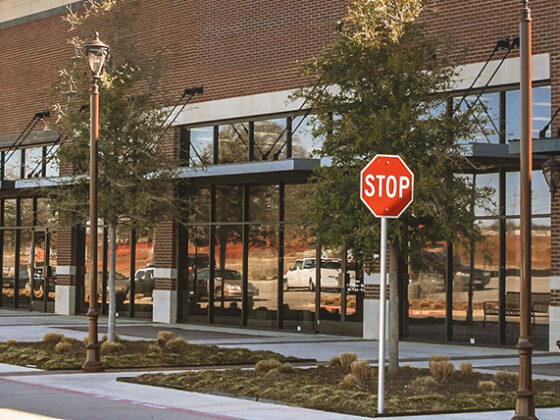The data every retailer relied on to connect with consumers before the pandemic must be reevaluated. Today’s consumer – the post-pandemic consumer who was isolated at home for several months, learned to rely on others to choose their groceries and deliver them, and refurbished their homes while shopping online – are not the same consumer they were before the pandemic. And more than ever, demographics are no longer an accurate predictor of consumer behavior on their own. Consumer behavior crosses gender and generational lines in ways retailers have never seen before. As we think about analytics and strategy, fully understanding a consumer requires demographic, psychographic, and social analytics. In fact, social segmentation has become an influential piece of the puzzle.
According to Synchrony, “In a world where consumer behaviors have been turned upside down, businesses have to rethink what loyalty looks like — and create new paths for building and maintaining customer loyalty for the long term. Smart brands are on it: finding ways to adapt technology, social media and other tools for the current environment while still leaning into the human elements of incentives, rewards and personal connections that sustain loyalty over time.”
Social as Part of the Shopper Journey
Rachel Lloyd of Green Room discussed the social retail trend in Retail TouchPoints:
“…despite the fact that most customer journeys start on social media through product discovery, there will always be a huge desire for people to experience brands in real life. Humans have an inherent desire to come together and connect in social settings. Yes, the rules of retail are changing, but the human needs and desires that retail fulfils are not.
But in order to survive, the store’s connection to the brand’s wider digital ecosystem is now absolutely vital to ensure that a dialogue is maintained long before a customer goes in-store and continued long after they leave.”
So as retailers find new ways to “adapt technology … while still leaning into the human elements…” social media rises to the forefront of the new way to not only connect with customers but learn about them. Consumers are turning to social media more than ever to explore and connect with brands. The search for and discover of products online fulfills a sense of adventure for consumers – it’s like being on a quest. And consumers are eager to share their discoveries and take pride in being the first to know about an unknown brand.
So while most consumers still want that in-store experience, for brands to get consumers to walk through the doors, they need to be accessible on social and paying attention to what their customers want. In other words, even as retail continues to change, the need for human connection and in-store shopping isn’t going away. Social retail is the connection brands need – and the way forward for more intelligent marketing.
The Need to Move from Demographics to Social Segmentation
Retailers currently have an enormous opportunity to connect more authentically and more effectively with their customers. In combination with actual physical shopping behavior and historical data, brands have an opportunity to leverage social sentiment to guide how they move forward. In fact, a social view is critical now to form a complete picture and guide retail strategy. By incorporating social listening and social segmentation, it’s possible to gain a more holistic picture of today’s consumer and how they’re interacting with your brand.

Moving Beyond Demographics
Retailers have historically lumped customers into targeting groups based on demographics. Messaging and advertising, maybe even product mix, became based on age and generational characteristics. People of a certain age were in specific stages of life. 20-somethings were starting families and buying homes. 30-somethings were making home improvements and raising families. 40-somethings were thinking about things like investing and insurance. 50-somethings were becoming empty nesters, focusing on travel and retirement planning. It was concrete, and everyone was following along with their age group in terms of life stages. Now, we have 80-year-olds graduating from college and 40-year-olds having their first child. Millennials aren’t even thinking about buying a home until they’re in their late 30s – if at all – and consumers across all demographics are spending their dollars with brands and companies whose beliefs and behaviors align with their own.
Benefits of Social Segmentation
In building the case for social segmentation as a strategy for better consumer engagement, consider these statistics:
- 77% of consumers say they are more likely to buy from a brand they follow on social media over one they do not (Social Media Today)
- In 2020, over 3.6 billion people were using social media worldwide, a number projected to increase to almost 4.41 billion in 2025. (Statista)
- 71% of consumers say it’s important for brands to raise awareness and take a stand on social issues. (Sprout Social)
- Half of worldwide marketers have turned to social listening to understand consumers’ changing preferences during the pandemic. (eMarketer)
In the past few years, retailers have learned to be quick to pivot because of how rapidly consumer sentiment can change. Using social signals gives retailers a deeper understanding of what consumers want – and how they want to buy. Instead of relying on what has happened in the past, a social view provides context around what is influencing buyer behaviors in real-time. Benefits include:
- Increase Customer Lifetime Value
- Improved customer engagement
- More cost-effective customer acquisition
- Improved omnichannel/integrated experience
- Significant improvement in anticipating customer needs, wants, and behaviors
How Can Retailers Use Social Segmentation?
Customers are more than their demographics. Social listening allows brands to identify not only consumer sentiment – toward brands and toward social issues they care about – but also can help brands measure what consumers say online against their actual behavior as consumers. And it allows brands to customize and personalize their messaging. For example, if consumers are talking about sustainability, a brand can tailor messaging with social segmentation around sustainability efforts. If they’re concerned with diversity and inclusion, the brand could then create content around the efforts they’re making in DEI. Knowing what is important to customers is crucial to building and maintaining loyalty for every brand.
Brands Doing It Right: Leveraging a Social View to Create Better Experiences
Understanding customers in real-time through social listening and targeting customers based on social segmentation rather than demographics can help brands connect more authentically with their consumers.

Target
Target is so good at attracting customers to their stores that they have their own entry in Urban Dictionary. They incorporate a variety of marketing strategies, an in-store shopping experience that makes people want to be in their stores, and partnerships with brands people love but in limited quantities that create FOMO – the “fear of missing out.” Their social media effectively connects them to their customers and explain that they try to post what their customers want, not what they think they should post. They incorporate user-generated content in their social media and website, from sharing shopping experiences posted by customers to reviews to answers about products on their website provided by users.

Sephora
Sephora uses a variety of social listening tools and social segmentation to reach their customers. They’ve recently been highlighted by Wall Street Journal for how they are using social media to share their purpose. In the interview, Suzanne Kounkel, CMO of Deloitte US says, “Organizations are seeking to demonstrate to all stakeholders—from customers and employees to partners and investors—why their companies exist and how they make an impact beyond profit.”

Gymshark
Gymshark, which we recently named a DTC brand to watch, is in part having success because of their approach to social retail. Not only are they leveraging influencer marketing to turn their brand into a household name, but they are using social listening to more accurately target their customers. Giraffe explains, “Gymshark is a key player in knowing your audience and using social media channels in a hyper-targeted way. For instance, Gymshark owns 3 different Instagram accounts (@gymshark, @gymsharkwomen and @gymsharktrain) all with different goals and purposes.” Maybe conducted an in-depth analysis of how Gymshark used social media to listen and connect with consumers here.
Social Retail Connects You with Your Customers
Social listening provides more accurate and up-to-date information than typical historical data and forecasting. And by using social signals, retailers can more quickly adapt to changing sentiments. Most importantly, however, social signals provide a cross-section of data that moves beyond generational demographics and allows a brand to align with consumers and use social segmentation to deliver more impactful experiences. With the great wealth transfer well underway, there are invaluable opportunities for companies to listen and learn from their customers in new ways.




